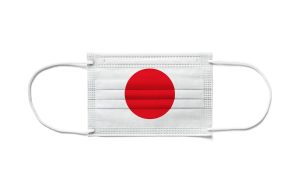The number of COVID-19 infections in Tokyo has plummeted after a “fifth wave” during the summer led to a state of emergency declaration and a spectator-less Tokyo 2020 Olympic Games. The summer surge, which led to the breakdown of the health care system, has prompted the government to frame the latest coronavirus contingency plan around bolstering hospital capacity.
On Friday, newly elected Prime Minister Kishida Fumio stressed the idea of “living with coronavirus” while preventing the collapse of the medical system. During the Tokyo Olympics the explosion of infections driven by the highly infectious Delta strain saw some 28,000 people require hospitalization. The government headed by then-Prime Minister Suga Yoshihide came under fire for its delay in declaring a state of emergency, which prolonged the crisis.
The new COVID-19 plan seeks to prevent an overflow of patients unable to receive treatment at hospitals, which led to a surge of home deaths over the summer. The worst-case scenario predicts a 30 percent increase in patients from the previous wave. Hospital beds for 37,000 seriously ill patients will be designated along with temporary medical facilities and inpatient waiting facilities for 3,400 patients at risk of falling seriously ill.
The pending approval of oral medications will also shift COVID-19 treatment toward home care. A home monitoring system will be put in place to ensure patients receiving home treatment will be contacted on a daily basis after testing positive. Japan also plans to make PCR testing free of charge to people without symptoms – previously, testing had been limited to people showing symptoms or to those who have had close contact with someone who has tested positive. A third COVID-19 booster vaccine will also be made available to health care workers in December and to the general public after March 2022.
Currently, COVID-19 infections are increasing in countries where vaccines are widely available. Germany, the U.K., Singapore and South Korea are experiencing a rapid rise in cast counts. The WHO warned that Europe could become the new virus epicenter after 53 countries across Europe recorded 1.8 million new COVID-19 infections and 24,000 deaths in the last week of October.
Japan’s rapid decline in infections coincides with the country’s accelerating COVID-19 vaccination drive, which has been taken up by 76.5 percent of the entire population. Japan’s belated vaccine rollout, which began in mid-February, has now surpassed the other G-7 members, including Canada, the U.S, Italy, the U.K., France, and Germany.
The daily number of infections in Tokyo is hovering in the double-digits, with only nine cases recorded on November 1 – the lowest figure this year. In the first week of October, Tokyo logged on average 154.3 cases, which fell to 77.1 in the second week, 35.4 cases in the third week, and 25.7 in the last week. On November 7, Japan reported no daily deaths from COVID-19 for the first time in 15 months.
The theory of herd immunity posits that infections will stop spreading when 70 percent of the population is vaccinated within a specific time frame. Experts have explained the resurgence in Europe as the result of a delay in vaccinations and vaccine efficacy gradually wearing off. Japanese authorities are now concerned that a winter peak could emerge a month or two after the resurgence currently seen in Europe. Health experts puzzled by the rapid decline in infections are also warning that “breakthrough” infections highlight how vaccines are not infallible.
However, most fully vaccinated patients will experience only mild symptoms from COVID-19. Japan’s coronavirus expert panel has unveiled a new five stage index with an emphasis on whether the medical system can be maintained rather than the raw number of new infections. The new system has decentralized the COVID-19 alert system by eliminating the uniform criteria. Instead, it requires local governments to monitor daily infections and predict the impact on local hospital capacity.
Head of the government expert panel, Omi Shigeru, said that the relevance of standardized guidelines based on a specific COVID-19 infection figure was coming to an end. He explained that the relationship between the number of infections and strain on hospital beds varies region to region. But critics argue that a lack of a uniform criteria could lead to a delay in countermeasures being implemented.
The plan aims to help rebuild Japan’s pandemic-hit economy and avoid the need for another state of emergency. But Kishida did not rule out reintroducing strict measures on people’s movements in the case of a sixth wave of COVID-19 in the winter.
































